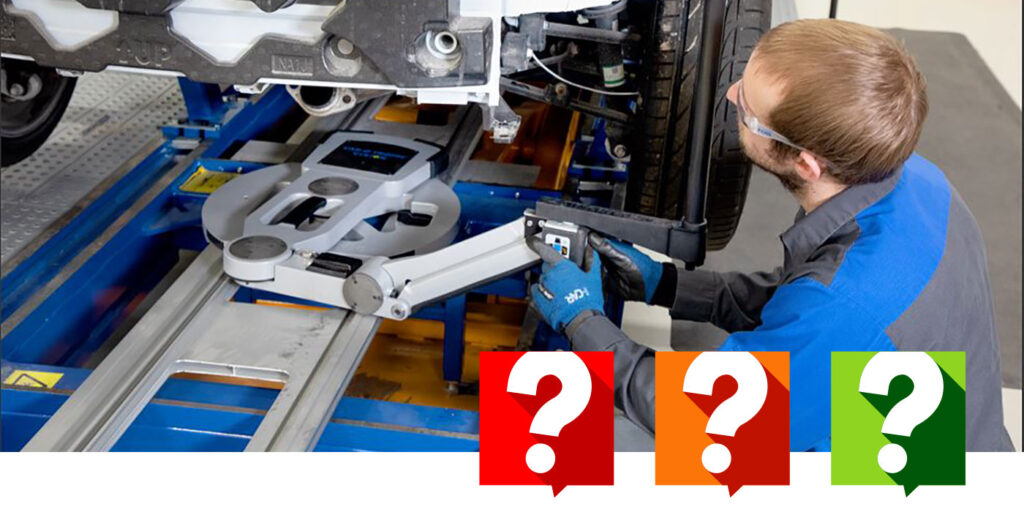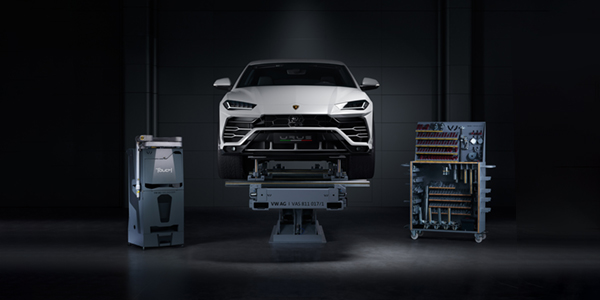Vehicle measuring has never been more important in today’s collision repairs. To learn the latest considerations — as well as a better understanding about why measuring is a vital step in the collision repair process — we caught up with industry expert Tyler O’Rourke, senior associate, SME and collision repair technician for I-CAR.
BodyShop Business: Why has measuring become more important today with new vehicles?
Tyler O’Rourke: I believe as vehicle construction technologies advance and improve with every new model release, it is more important than ever to have a vehicle structure as close as possible to how it was when it left the factory. Along with the advancements in how cars are assembled, the materials used have also greatly improved over the years. With the introduction of advanced steels and other stronger alloys or composites, the way collision energy is transferred and absorbed in the vehicle structure has changed. You may see tolerances out of spec much further away from the damage than what might be expected with older vehicles.
BSB: Should repairers measure every single vehicle that comes in?
TO: I believe every vehicle in for repairs should be measured. Start with a tape measure or tram bar to do comparative measurements and see if there is a need to further measure with a computerized or electronic 3D measuring system. When I started late-model collision repairs, the tolerances on cars and trucks were not as tight they are today. Now, even a small front bumper job could have deflection in the reinforcement or radiator core support. While a very small amount of movement may not seem like a big deal, if an advanced driver-assistance system (ADAS) sensor was mounted to either of those parts, they could now be giving inaccurate data to different modules in the vehicle. Today’s tools and devices also help with documentation of the damage and are more accurate than the technician’s eye. Additionally, having documentation from before repairs begin and after the vehicle dimensions are restored is so important to keep on file and for future reference if needed.
BSB: What sort of equipment exists for measuring? Has it advanced to become “dummy-proof,” or is there still significant training involved?
TO: Like I’ve mentioned previously, simple measuring devices like tape measures or trams are inexpensive and readily available. I would, however, strongly recommend that facilities invest in an advanced 3D measuring system. It seems there are more and more types of advanced computerized or electronic 3D measuring systems available for repair facilities. Different systems could use lasers, robotic arms or 3D images to quickly measure different structures or mechanical parts of a vehicle very quickly to determine if damage is present. While the user interaction of these different systems seems to be very user-friendly, I believe proper training by the equipment maker can greatly improve a technician’s understanding of the equipment. I also believe it is just as important for technicians to get proper training on vehicle structure design and 3D measuring theory to better understand what the equipment is reading and how to return the vehicle to proper dimensions.
BSB: How does measuring and ADAS tie together?
TO: ADAS systems are getting faster, more accurate and better, with tolerances being more precise than ever. These same systems are also taking over more and more of the vehicle’s control. The difference between a functioning and unresponsive system could be the difference of a couple of millimeters at a sensor mounting location. Forward-facing radar sensors or cameras that send vital information to a collision mitigation system could be far less effective, especially as speeds increase. More often than not, these sensors and cameras mount to brackets which then mount to parts of the vehicle structure. You need that structure to be as close to what it was when it left the factory when the ADAS systems were initially calibrated for the best results.
BSB: Should there be a designated “measuring expert” in the shop, or can anyone in the shop do it?
TO: It would be great if every technician in the facility was a “measuring expert” or at least had the understanding and knowledge to know when one was needed. The proper training and equipment is needed to properly repair modern vehicles, in my opinion. It would also be great if a facility had procedures to include measuring in a proper blueprinting or triage scenario to document all damage before repairs begin to reduce supplements and improve cycle times. I’ve heard and witnessed far too many stories of cars being near completion and a four-wheel alignment was not able to be completed because the vehicle’s structure was bent or out of tolerance and the car had to then go on a frame rack or similar bench to be repaired before returning for a four-wheel alignment. Initial setup and base point identification when measuring is a critical part of obtaining accurate measuring results; this is something that needs to be stressed, and the technician needs to be in tune with the system and vehicle to ensure no errors are introduced at this stage of measuring. If you only use the equipment periodically, you may not maintain proficiency with it — and this can introduce problems.
BSB: Are there any original equipment manufacturer (OEM) recommend-
ations to heed when it comes to measuring vehicles?
TO: I’ve noticed that most vehicle makers require specific equipment for certification in their programs. Aside from that, you may also find guidelines on tolerances and proper anchoring of vehicle models in addition to precautions for aluminum and mixed material vehicle structures. It is important to always reference vehicle maker service information for every car every time you start a repair. OEM guidelines are there for a reason and have been known to change from time to time. I’ve also noticed that some vehicle makers document their guidelines and tolerances better than others, and some repair tolerances are not provided by all; some vehicle makers only publish dimensions.














